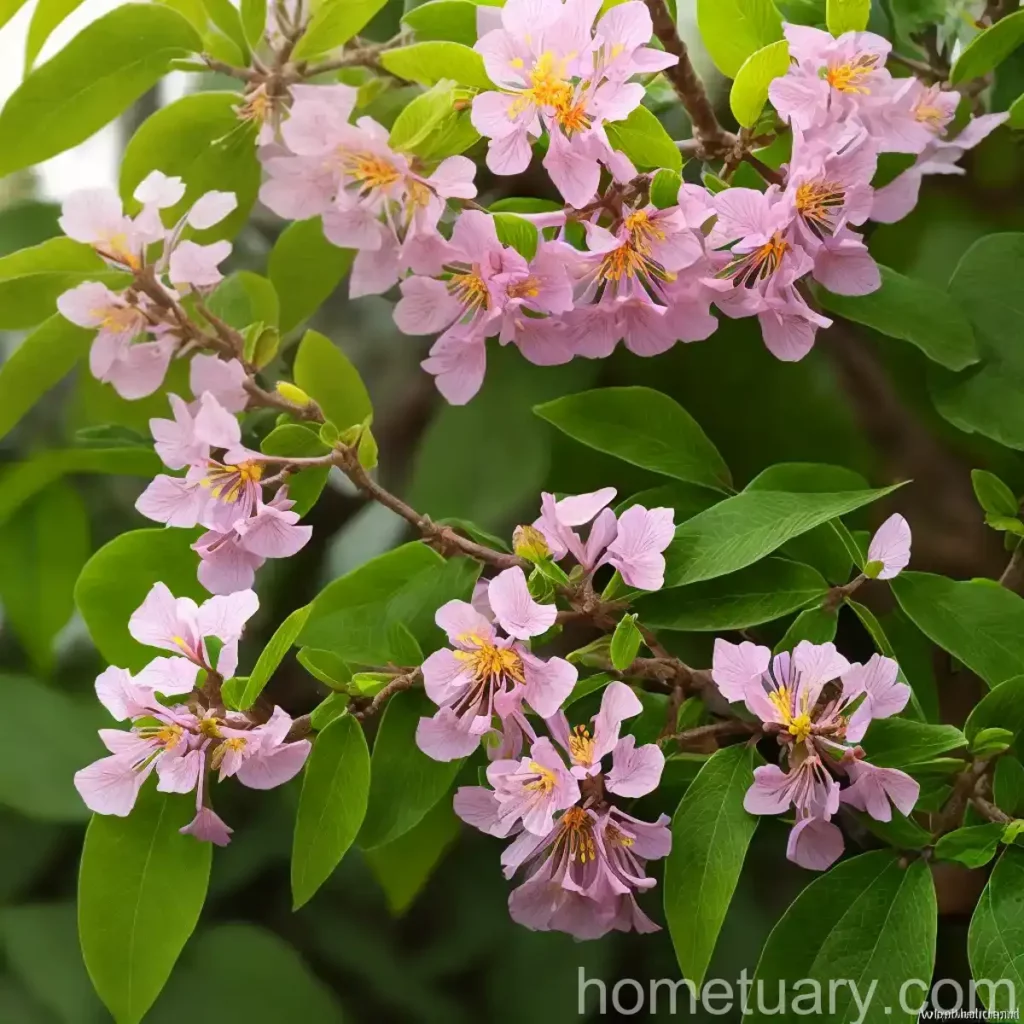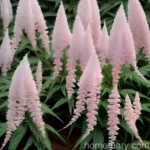Indian Plum (Oemleria cerasiformis): A Plant Scientist’s Guide
In this article, we will delve into the world of Indian plum (Oemleria cerasiformis), exploring its characteristics, uses, cultivation, care, and ecological significance. We will also cover topics such as propagation, common diseases, pests, and practical tips for maintaining a healthy Indian plum plant. Whether you are a plant enthusiast, a gardener, or a botanist, this comprehensive guide will provide valuable insights into this unique and ecologically important plant species.
What is Indian Plum (Oemleria cerasiformis)?
Indian plum, scientifically known as Oemleria cerasiformis, is a deciduous shrub native to western North America. It is a member of the rose family (Rosaceae) and is also commonly referred to as Osoberry. The plant is known for its delicate white flowers, which emerge in early spring, and its edible purple fruits, which ripen in late summer. Indian plum is valued for its ecological significance, as it provides food and habitat for various wildlife species, including birds and pollinators. In addition to its ecological importance, Indian plum has cultural and medicinal significance and is often used in traditional Native American practices.
Key Takeaways – Indian Plum (Oemleria cerasiformis)
Before delving deeper into the specifics of Indian plum, let’s highlight some key takeaways about this fascinating plant:
Culture
- Common Name: Indian Plum, Osoberry
- Scientific Name: Oemleria cerasiformis
- Family: Rosaceae
- Native Habitat: Western North America
Uses
- Ecological: Provides habitat and food for wildlife
- Cultural: Used in traditional Native American practices
- Medicinal: Has been utilized for its medicinal properties
Now that we have a brief overview of Indian plum, let’s explore its cultivation, care, and ecological importance in more detail.
Indian Plum Cultivation
Water
Indian plum is well-adapted to a variety of moisture conditions, from relatively dry sites to wetter areas. Once established, it is relatively drought-tolerant, making it suitable for xeriscaping and low-water landscapes.
Sunlight
This shrub thrives in a range of light conditions, from full sun to partial shade. However, it typically performs best in locations with partial shade, especially in regions with hot summers.
Fertilizer
Indian plum generally does not require heavy fertilization. A balanced slow-release fertilizer can be applied in the spring to promote healthy growth. Organic compost can also be used to improve soil fertility and structure.
Soil
It is adaptable to various soil types, including loamy, sandy, or clay soils, as long as they are well-draining. Amending the soil with organic matter can improve its fertility and drainage.
Pruning
Pruning Indian plum is typically minimal and is primarily done to maintain its shape or remove dead or damaged wood. It is best pruned after the fruiting period to promote healthy regrowth.
Propagation
Indian plum can be propagated from seeds or stem cuttings. Softwood cuttings taken in late spring can be rooted with the application of a rooting hormone. Seed propagation requires stratification and can be a slower process.
Container Popularity
While Indian plum is more commonly grown in naturalistic landscapes and native plant gardens, it can also be cultivated in large containers. It is important to ensure that the container provides adequate space for root development.
Now that we have discussed the cultivation and care aspects of Indian plum, let’s explore its popularity and the common diseases and pests that can affect this plant.
Popularity of Indian Plum
Indian plum is gaining popularity in the landscaping and gardening communities for several reasons:
- Wildlife Benefits: Many gardeners and environmental enthusiasts appreciate the ecological value of Indian plum as a wildlife-friendly plant.
- Native Plant Landscaping: With a growing emphasis on native plant landscaping, Indian plum has become a sought-after choice for sustainable and ecologically beneficial gardens.
- Low Maintenance: Its adaptability to various growing conditions and minimal maintenance requirements make Indian plum an attractive option for landscapers and homeowners.
As with any plant, Indian plum is susceptible to certain diseases and pests. Let’s explore the common issues and how to address them.
Common Diseases of Indian Plum
Disease Diagnosis
Indian plum may be susceptible to some common diseases, including:
- Powdery Mildew: This fungal disease can affect the foliage of the plant, creating a powdery white coating on the leaves.
- Fire Blight: Caused by the bacterium Erwinia amylovora, fire blight can result in wilting, blackening, and dieback of the branches.
Common Pests
Indian plum may also encounter pests such as:
- Aphids: These small insects can feed on the sap of the plant, causing stunted growth and distortion of leaves.
- Scale Insects: Scale insects can infest Indian plum, appearing as small, waxy bumps on the stems and leaves.
Effective disease and pest management strategies include promoting overall plant health, maintaining proper sanitation, and using targeted treatments when necessary. Now, let’s move on to some practical tips for maintaining a healthy Indian plum plant.
Botanist’s Tips for Indian Plum
Tip 1: Wildlife Habitat Enhancement
When planting Indian plum, consider its value as a wildlife food source and habitat. Selecting multiple Indian plum plants can create a more extensive and diverse habitat for various wildlife species.
Tip 2: Ecological Companion Planting
Complement Indian plum with other native plants to create a diverse and ecologically rich landscape. Consider adding species that bloom at different times to support pollinators and provide year-round interest.
Tip 3: Mulching
Apply a layer of organic mulch around the base of Indian plum to conserve soil moisture, suppress weed growth, and enhance soil structure. Organic mulches also contribute to the gradual enrichment of the soil as they decompose.
Tip 4: Monitoring for Pests and Diseases
Regularly inspect the foliage and stems of Indian plum for signs of pests or diseases. Early detection can help in implementing appropriate control measures before the issues become severe.
By incorporating these tips, gardeners and land managers can promote the health and ecological value of Indian plum in their landscapes. Now, let’s explore some fun facts about Indian plum before diving into additional resources for further learning.
Fun Facts about Indian Plum
- Cultural Significance: Indian plum has been utilized by Native American tribes for various purposes, including traditional medicine and dye production.
- Wildlife Value: The fruits of Indian plum are consumed by a variety of wildlife, including birds, mammals, and insects, making it a valuable food source in native ecosystems.
- Deciduous Beauty: In the fall, Indian plum displays vibrant yellow to orange foliage, adding a splash of color to the landscape.
With its ecological, cultural, and aesthetic significance, Indian plum offers a range of benefits for both natural and cultivated landscapes. Now, let’s explore some external resources that provide additional information on Indian plum.
Links to External Resources
For further exploration of Indian plum (Oemleria cerasiformis), consider the following resources:
- USDA Plants Database – Oemleria cerasiformis
- Washington Native Plant Society – Indian Plum
- Lady Bird Johnson Wildflower Center – Oemleria cerasiformis
These resources offer detailed information on the characteristics, cultivation, and ecological significance of Indian plum, providing valuable insights for plant enthusiasts, gardeners, and conservationists.
In conclusion, Indian plum (Oemleria cerasiformis) stands out as a versatile, ecologically important, and culturally significant plant species. Its adaptability to various growing conditions, low maintenance requirements, and valuable ecological role make it a desirable addition to naturalistic landscapes, native plant gardens, and wildlife habitat restoration projects. By understanding and appreciating the unique attributes of Indian plum, we can further promote its conservation and ecological value in our natural environments.
We hope that this comprehensive guide has provided valuable insights into the world of Indian plum and inspired further exploration of its ecological, cultural, and horticultural significance.
Whether you are intrigued by its wildlife benefits, cultural significance, or simply its ornamental beauty, Indian plum offers a wealth of opportunities for botanical appreciation and ecological stewardship. Thank you for joining us on this journey through the fascinating world of Indian plum. Happy gardening!
That was the blog post. If there are any changes or further details required, feel free to ask!















